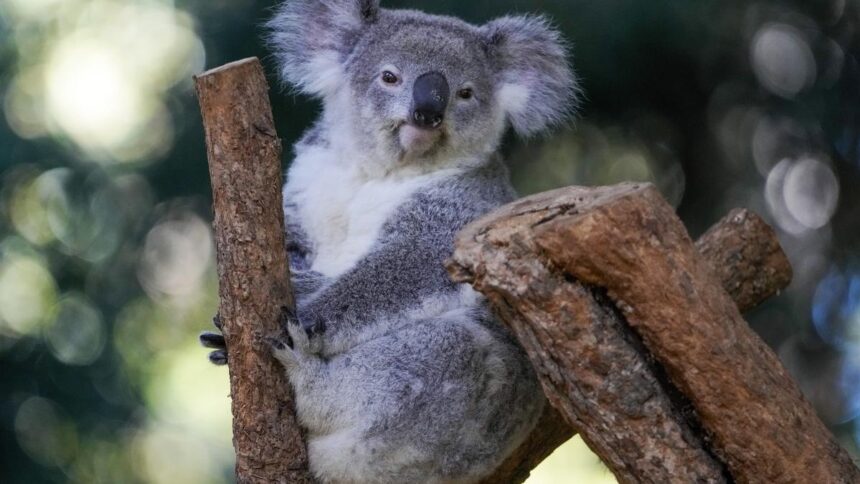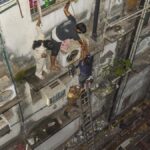Helicopter-Sniping of Koalas in Victoria’s Budj Bim National Park
In recent weeks, snipers in helicopters have targeted more than 700 koalas in the Budj Bim National Park in western Victoria. This method of culling is believed to be unprecedented.
The cull became public on Good Friday, after local wildlife carers were reportedly tipped off. The government stated the cull was urgent due to starving or burned koalas.
Wildlife groups are concerned about how individual koalas were chosen for culling, as they are assessed from a distance. It’s unclear if shooting from a helicopter complies with the state’s animal welfare and response plans for wildlife in disasters.
The Victorian government must explain why it is conducting aerial culling and why it did so without announcing it publicly. This incident highlights ongoing failures in managing koalas, which are already threatened in other states.
Why Did This Happen?
Koalas live in eucalypt forests across Australia’s eastern and southern states. They face threats from habitat destruction and bushfire risk. They are considered endangered in New South Wales, Queensland, and the Australian Capital Territory.
In Victoria, koala population levels are currently secure. However, they are densely concentrated in fragments of bush known as habitat islands in the state’s southwest. Budj Bim National Park is one of these islands.
Over time, this concentration becomes a problem. When koalas are too abundant, they can strip leaves from their favorite gums, killing the trees. The koalas must then move or risk starvation.
If fire or drought make these habitat islands impossible to live in, koalas in dense concentrations often have nowhere to go.
In Budj Bim, Victoria’s Department of Energy, Environment and Climate Action and Parks Victoria have tackled koala overpopulation alongside Traditional Owners by moving koalas to new locations or sterilizing them.
But Budj Bim is also surrounded by commercial blue gum plantations. Koalas spread out through the plantations to graze on the leaves. Their populations grow. But when the plantations are logged, some koalas have to return to the national park, where food may be in short supply.
Animal welfare groups say logging is one reason Budj Bim had so many koalas.
It’s hard to say definitively whether this is the case, because the state environment department hasn’t shared much information. But researchers have found habitat islands lead to overabundance by preventing the natural dispersal of individuals.
Why Was the Culling Done?
Department officials have described the program as primarily motivated by animal welfare. After the bushfire last month, koalas have been left starving or injured.
Helicopter-Shooting
Under Victoria’s plan for animal welfare during disasters, the environment department is responsible for examining and, where necessary, euthanizing wildlife during an emergency.
For human intervention to be justified, euthanasia must be necessary on welfare grounds. Victoria’s response plan for fire-affected wildlife says culling is permitted when an animal’s health is significantly compromised, invasive treatment is required, or survival is unlikely.
For koalas, this could mean loss of digits or hands, burns to more than 15% of the body, pneumonia from smoke inhalation, or blindness or injuries requiring surgery. Euthanized females must also be promptly examined for young in their pouches.
The problem is that while aerial shooting can be accurate in some cases for larger animals, the method has questionable efficacy for smaller animals, especially in denser habitats.
It’s likely a number of koalas were seriously injured but not killed. But the shooters employed by the department were not able to thoroughly verify injuries or whether there were joeys in pouches, because they were in the air and reportedly 30 or more meters away from their targets.
While the department cited concerns about food resources as a reason for the cull, the state’s wildlife fire plan lays out another option: delivery of supplementary feed. Delivering fresh gum leaves could potentially have prevented starvation while the forest regenerates.
Lessons for the Government
The state government should take steps to avoid tragic incidents like this from happening again.
Preserving remaining habitat across the state is a vital step, as is reconnecting isolated areas with habitat corridors. This would not only reduce the concentration of koalas in small pockets but increase viable refuges and give koalas safe paths to new food sources after a fire.
Future policies should be developed in consultation with Traditional Owners, who have detailed knowledge of species distributions and landscapes.
We need better ways to help wildlife in disasters. One step would be bringing wildlife rescue organizations into emergency management more broadly, as emphasized in the 2009 Victorian Bushfires Royal Commission and the more recent Royal Commission into National Natural Disaster Arrangements.
This latter report pointed to South Australia’s specialized emergency animal rescue and relief organization, SAVEM, as an effective model. Under SA’s emergency management plan, the organization is able to rapidly access burned areas after the fire has passed through.
Victoria’s dense communities of koalas would be well served by a similar organization able to work alongside existing skilled firefighting services.
The goal would be to make it possible for rescuers to get to injured wildlife earlier and avoid any more mass aerial culls.
Liz Hicks is Lecturer in Law, University of Melbourne. Ashleigh Best is Barrister, Victorian Bar and Honorary Fellow, Melbourne Law School, University of Melbourne. This article is republished from The Conversation.
Reference : https://www.thehindu.com/sci-tech/science/australian-state-culls-700-starving-koalas-after-bushfire-stoking-controversy/article69505301.ece








